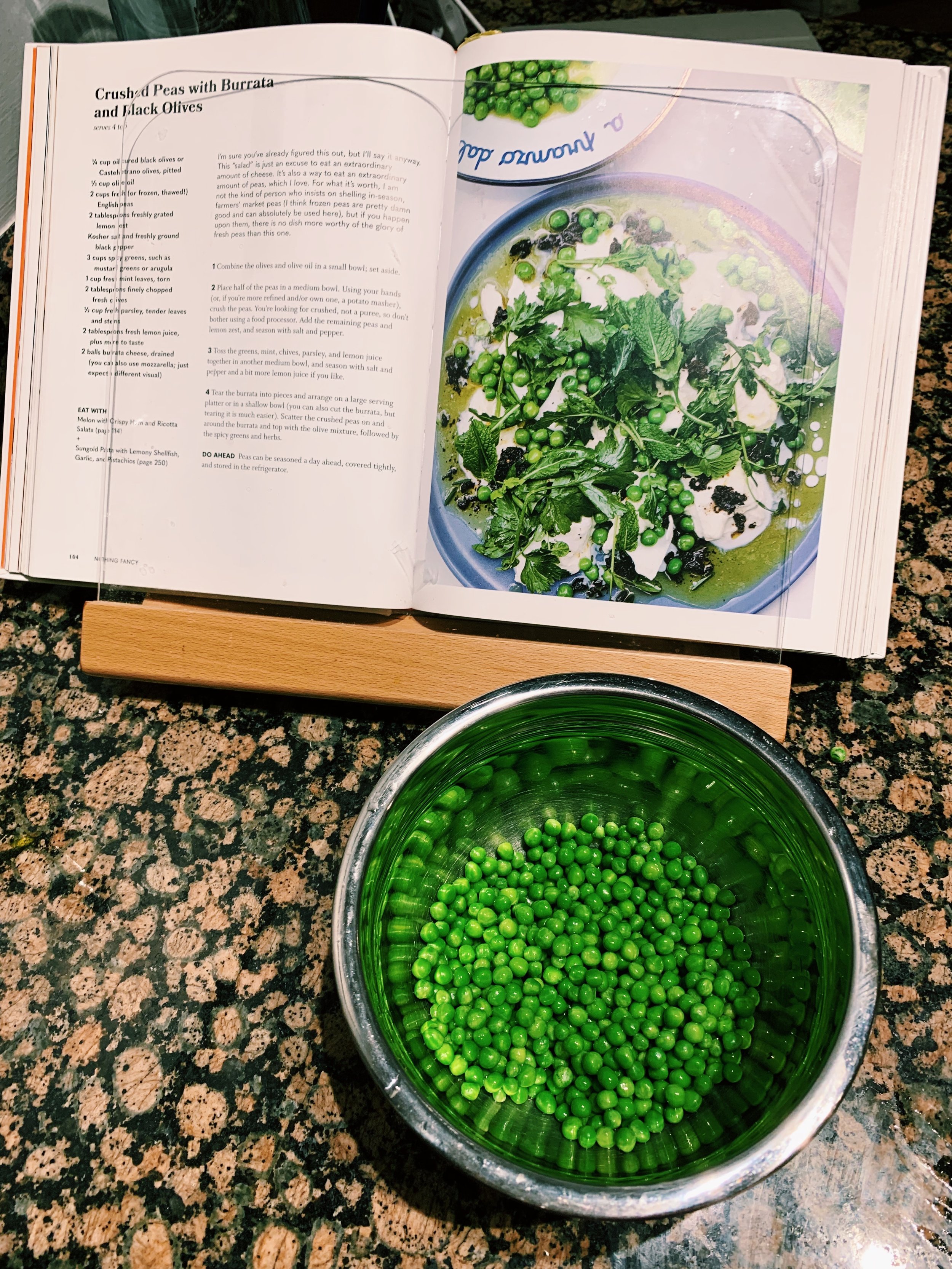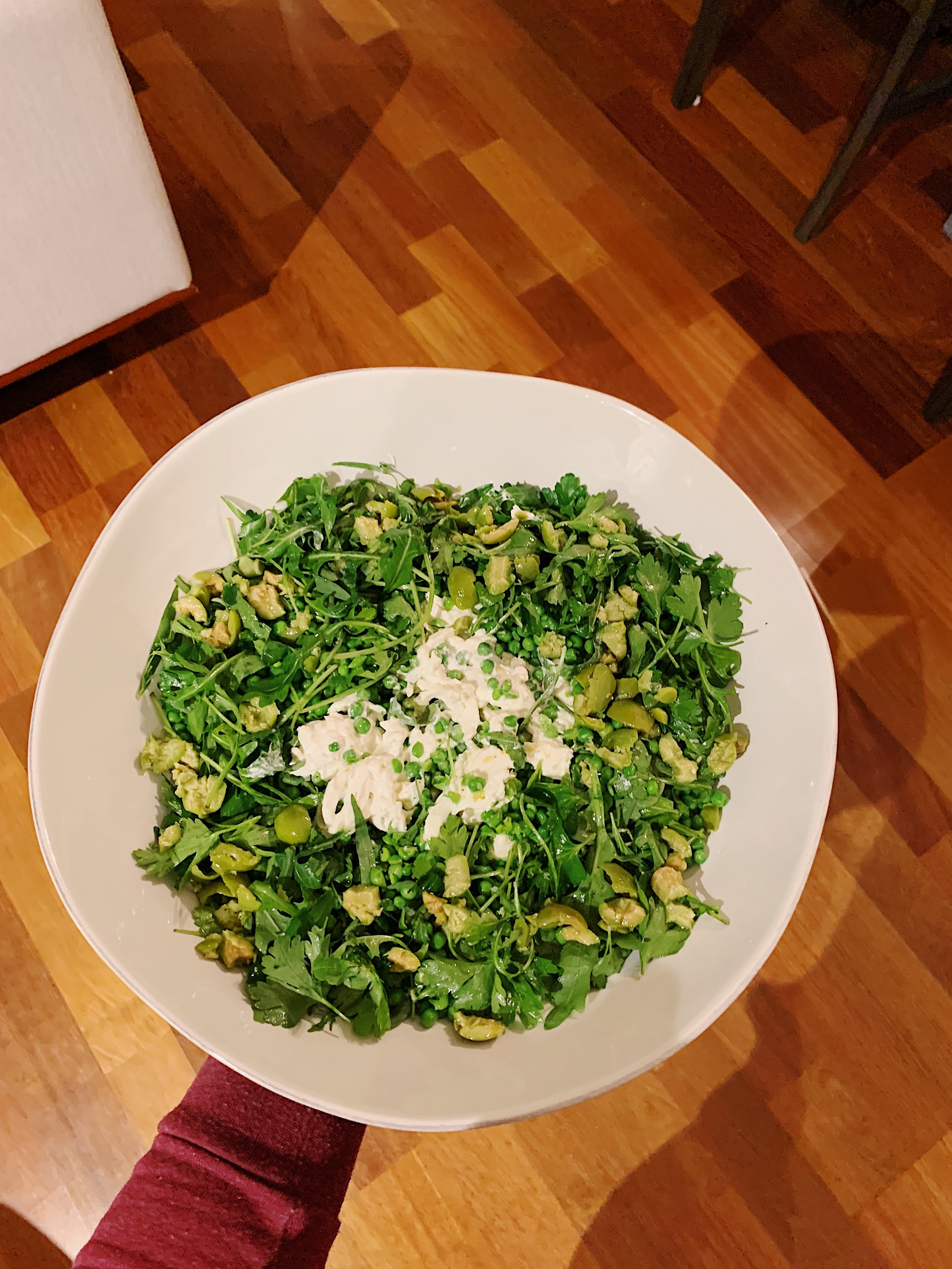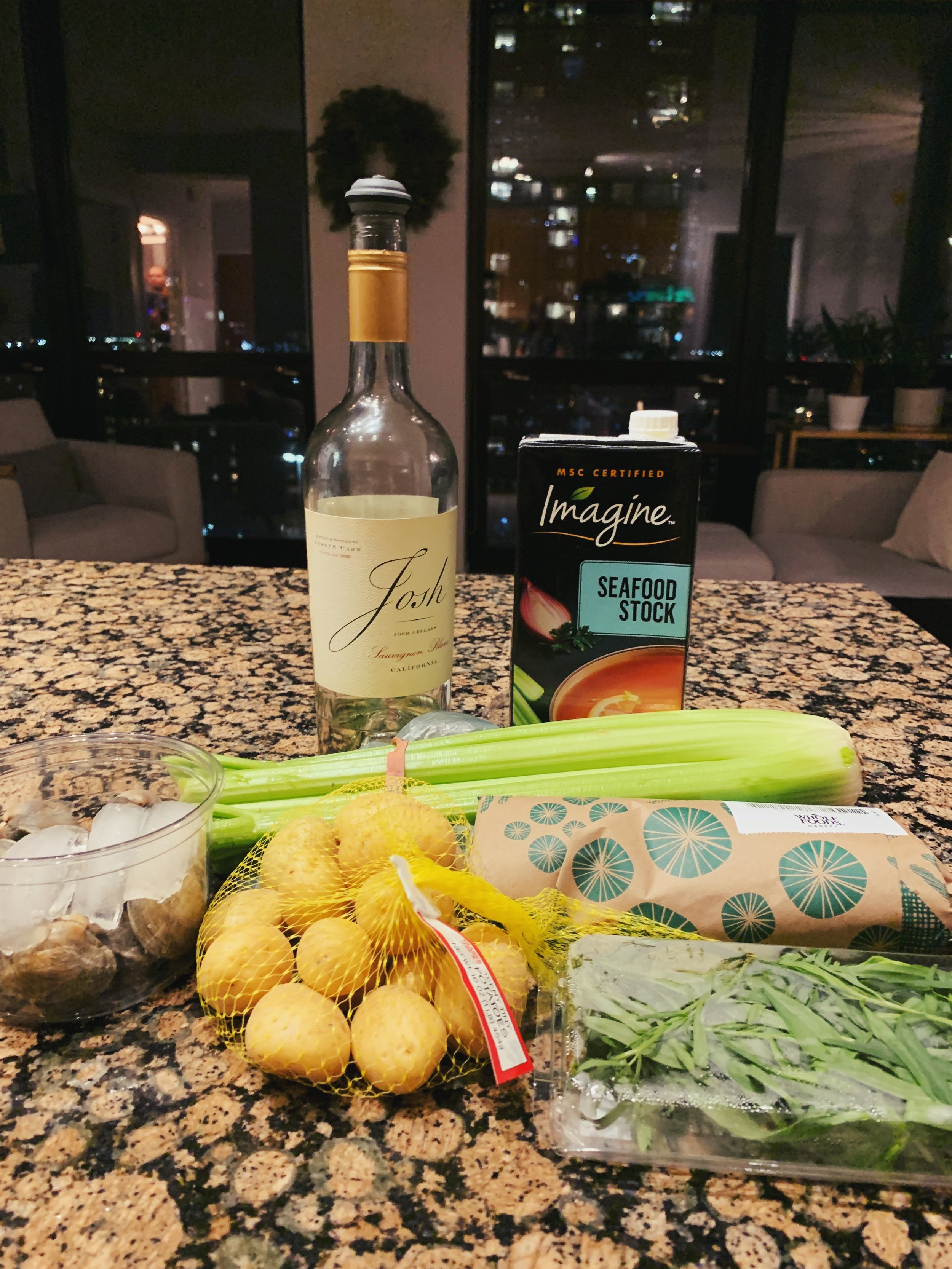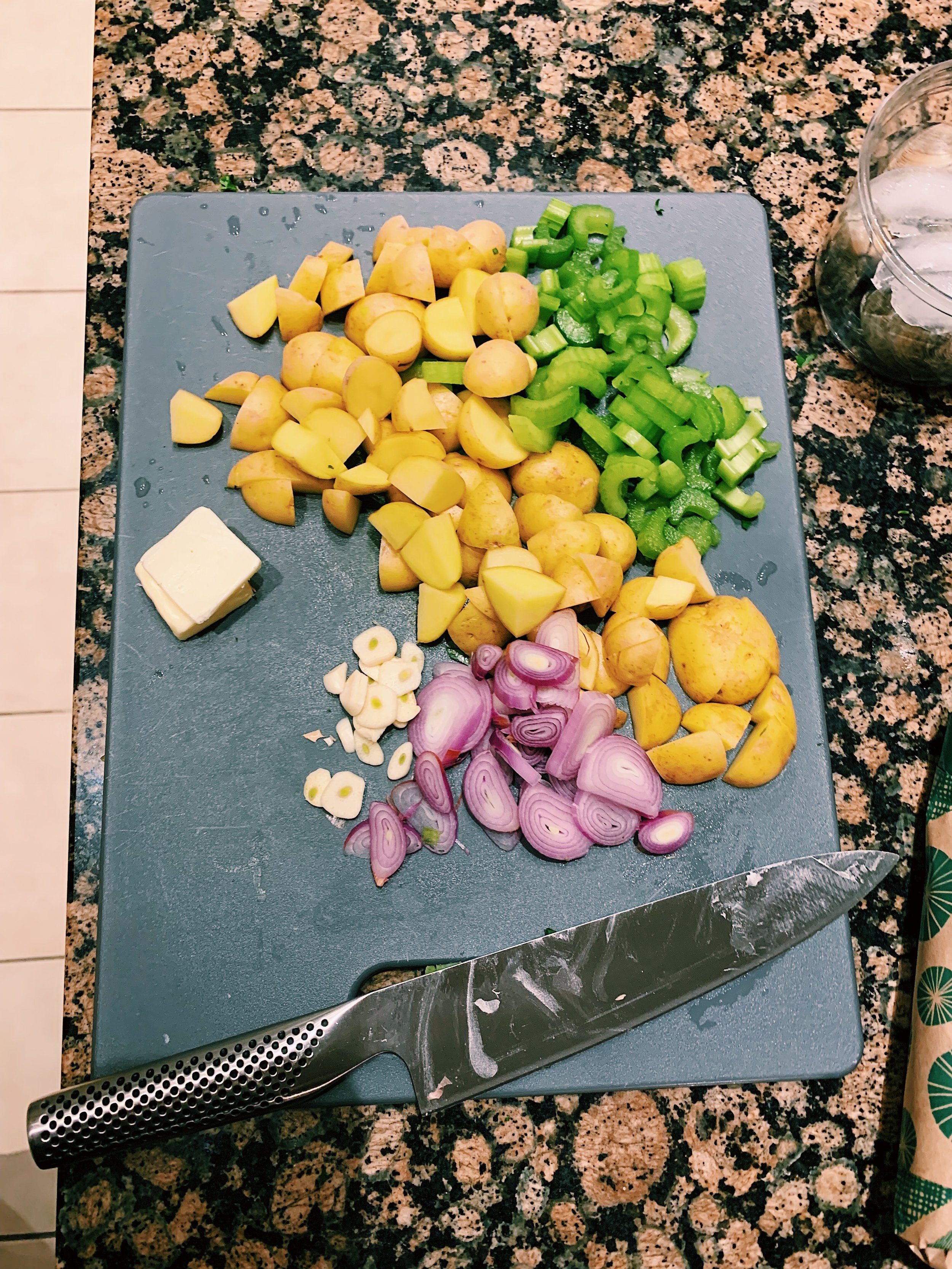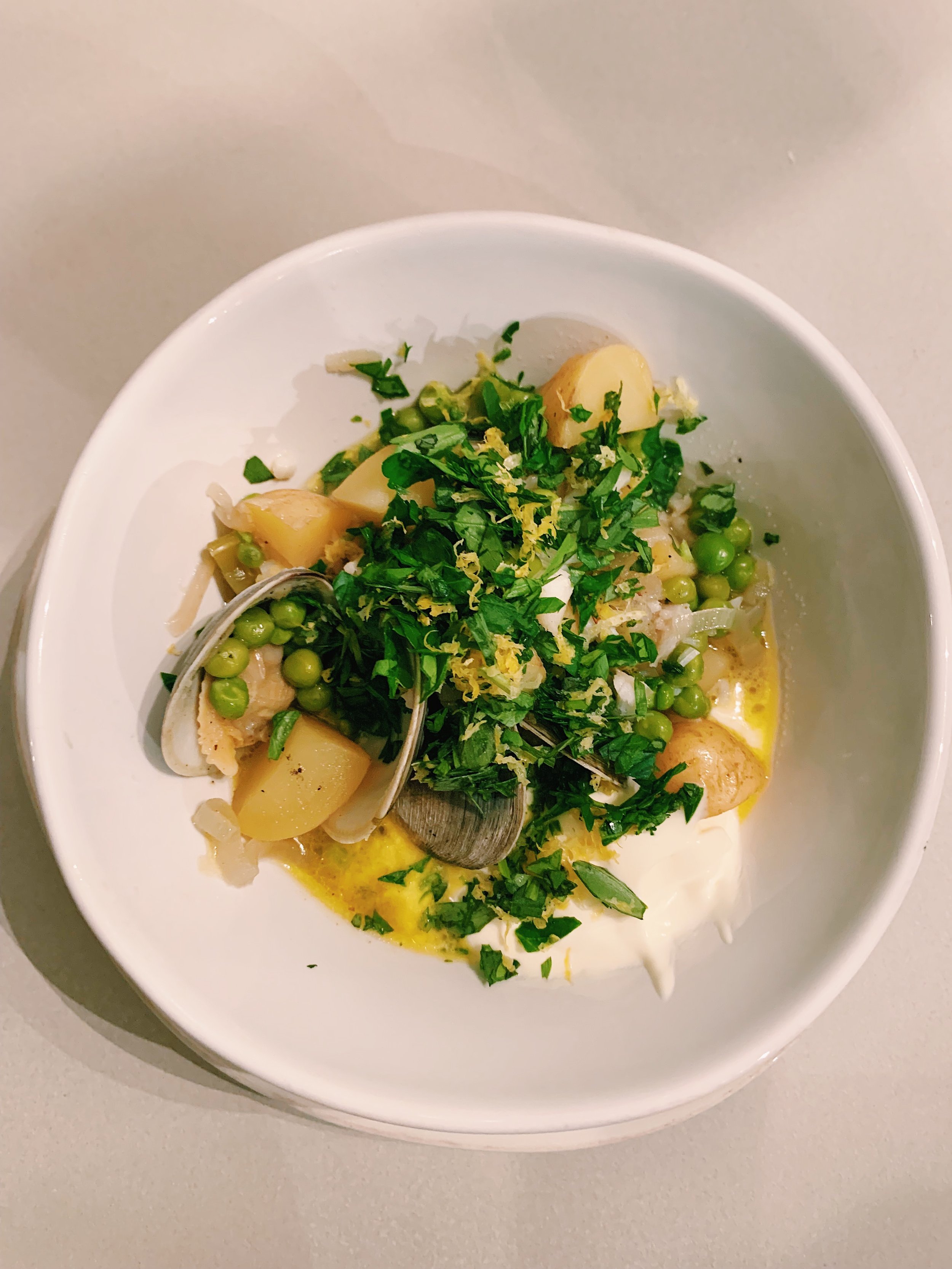Two burrata salads, both alike in dignity. Both delicious, one more complex than the other. Both boasting bold ingredients, then tempered by the rich creamy insides of a burrata ball. Both utilizing arugula, one slightly more memorable than the other.
I’ll start with the most impactful salad: Crushed Peas with Burrata and Black (Green) Olives.
Yes, I used green Castelvetrano olives here because I like them better than black olives. A whole lot better. I crushed a handful of them and laid them to rest in olive oil while prepping the rest of the salad. Please note that Alison says nothing in the recipe about crushing the olives, but the picture in the book appears to have crushed black olives, so that’s what I did. Plus, I don’t want to eat a whole olive when everything else in the salad is much smaller/crushed. The texture of whole olives just didn’t feel right.
I used frozen and thawed peas instead of fresh peas. Half of the peas are crushed by hand, (it’s almost as satisfying as crushing canned, whole tomatoes by hand, and less messy) and mixed with the other half of the peas, lemon zest, salt, and pepper.
I chose arugula, parsley, and tarragon as my greens, since that’s what I had on hand. I tossed them with lemon juice, then set out to arrange the salad. First, tear the burrata into bite-sized pieces and place it in the center of a serving platter. Next, spoon the peas over and around the burrata. Then, scatter the lemony greens over the peas. Finally, spoon the olives and oil over the salad, followed by more oil and flaky salt. I served this salad with Alison’s Pizza Night (post to come) and it was a true hit! Fully of salty, tangy, herby flavor and fun textures that complemented the pizza nicely. I’ll certainly make this one again!
And finally: Burrata with Tangerines, Shallots, and Watercress
I also used arugula here instead of watercress for convenience reasons. I first marinated the sliced shallots in lemon juice. Then peeled and sliced several tangerines. I arranged the salad in a similar fashion to the one above: torn burrata in the middle, citrus scattered, then greens, then lemony shallots, followed by a drizzle of olive oil, salt and pepper. For those who don’t like funky flavors, this salad is very straightforward and well balanced. It can pair well with a wider range of dishes, compared to the other salad.
The burrata with tangerines salad feels like something you’d order at a country club, meaning it’s fresh and healthy tasting, but it probably won’t change your life. The burrata and peas salad could easily be ordered at a hip restaurant in Brooklyn, and you might walk away a bit different than before.
200 and 201 recipes cooked, 24 to go.


